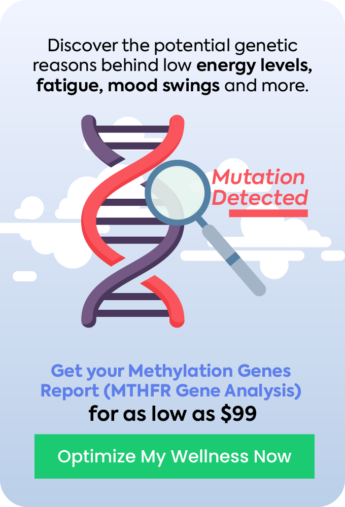Preeclampsia is a pregnancy complication characterized by high blood pressure and signs of damage to other organs like the liver and kidneys. It can occur after 20 weeks of pregnancy, even in women whose blood pressure has previously been within the normal range. The exact cause of preeclampsia remains unknown, but researchers believe it to be related to problems with the placenta which nourishes the fetus throughout pregnancy. Factors such as genetics, maternal age, and underlying health conditions like chronic hypertension or diabetes may increase the risk.
Preeclampsia can lead to severe or even fatal complications for both the mother and baby if left untreated. Early delivery is often the recommended course of action in severe cases. The condition affects about 5-8% of pregnancies worldwide and is a leading cause of maternal and neonatal morbidity and mortality.
How is Preeclampsia Diagnosed?
Preeclampsia is diagnosed primarily through routine prenatal care visits where the doctors check the blood pressure and advise urine tests. Doctors typically suspect preeclampsia if a pregnant woman has a blood pressure reading of 140/90 mmHg or higher on two occasions at least four hours apart after 20 weeks of gestation. Additionally, protein in the urine (proteinuria) can be a critical indicator of preeclampsia. Blood tests assessing liver function, kidney function, and platelet count can help confirm the diagnosis. In some cases, tests such as ultrasound and Doppler studies are used to evaluate the baby’s growth and the health of the placenta. Early detection through regular prenatal care is crucial in managing preeclampsia and minimizing the risks to both the mother and the baby.
What are the Symptoms of Preeclampsia?
The symptoms of preeclampsia can vary but commonly include high blood pressure and proteinuria. Other symptoms may involve severe headaches, visual disturbances (such as blurriness or seeing spots), upper abdominal pain (often under the ribs on the right side), nausea or vomiting, decreased urine output, shortness of breath due to fluid in the lungs, and sudden weight gain or swelling, particularly in the face and hands. These symptoms can be subtle or mistaken for normal pregnancy-related changes, which is why regular monitoring is essential.
In some cases, women with preeclampsia may not exhibit any noticeable symptoms, highlighting the importance of routine prenatal check-ups. Severe preeclampsia can lead to complications like eclampsia (seizures), HELLP syndrome (a severe form of preeclampsia involving breakdown of the blood cells, elevated liver enzymes, and low platelet count), or placental abruption.
Genetics of Preeclampsia
In the early 1960s, evidence of a genetic predisposition to preeclampsia was first documented, with overall heritability estimated at approximately 55%. The genetics of preeclampsia is complex and not fully understood. Research suggests that both maternal and fetal genetic factors contribute to the risk.
Family history is a significant risk factor. A 2020 study examined whether a mother’s age at delivery influences her daughter’s risk of developing preeclampsia during her first pregnancy. The study analyzed data from 39,803 women and found that daughters of teenage mothers had a slightly higher risk of preeclampsia compared to those born to mothers aged 20-24. Accordingly, daughters of mothers aged 25 or older had a slightly lower risk.
While both maternal and fetal genetics can influence preeclampsia risk, identifying the key genes has been challenging. Despite the long history of genetic research, traditional methods have not consistently pinpointed the genes involved. However, recent advances through genome-wide association studies (GWAS) have made significant progress. A notable GWAS involving over 7 million genetic variants has identified a strong association between preeclampsia risk and a region near the FLT1 gene on chromosome 13, which encodes soluble Fms-like tyrosine kinase 1 (sFLT1). Preeclampsia is characterized by hypertension and proteinuria, and the FLT1 protein plays a key role in these symptoms by inhibiting molecules that promote blood vessel growth. Hence it can be inferred that excess FLT1 in maternal plasma is central to the development of these symptoms.
Can Stress Cause Preeclampsia?
While stress is not a direct cause of preeclampsia, it may contribute to the condition in some ways. Chronic stress can lead to increased blood pressure and inflammation, both of which are risk factors for preeclampsia. Stress also affects immune function and hormone levels, potentially exacerbating underlying conditions that may lead to preeclampsia.
Some studies have suggested a link between high levels of psychosocial stress and an increased risk of developing preeclampsia, but this relationship is not fully understood. It is important to note that preeclampsia is a multifactorial condition. While stress may play a role, it is unlikely to be the sole cause. Managing stress through relaxation techniques, adequate sleep, and support from healthcare providers may help reduce the risk or severity of preeclampsia.
Can Preeclampsia Be Treated?
There is currently no known cure for preeclampsia, but it can be managed to reduce risks to the mother and baby. The only definitive treatment for preeclampsia is delivering the baby and placenta. However, the decision for early delivery depends on the severity of the condition and the gestational age of the fetus. If the condition is mild and occurs earlier in pregnancy, close monitoring of the mother and baby, bed rest, and medications (such as magnesium sulfate) to lower blood pressure and prevent seizures will help. For women with severe preeclampsia, early delivery may be necessary when the pregnancy is close to term. Doctors may administer corticosteroids to help mature the baby’s lungs if they anticipate early delivery. Regular prenatal visits and early detection are essential in managing preeclampsia and minimizing complications.
Can Preeclampsia Cause Autism in the Child?
There is some evidence to suggest that preeclampsia may be associated with an increased risk of neurodevelopmental disorders, including autism spectrum disorder (ASD), in the child. A study by the U.S. National Institute of Environmental Health Sciences in Durham, North Carolina, analyzed nearly 1 million records of single, full-term births in Norway between 1991 and 2009. Researchers tracked the health outcomes of these children from birth until at least age 5, with an average follow-up age of 14. The study found that approximately 28,000 of these children were born to mothers with preeclampsia, and these children were 1.29 times more likely to develop autism compared to those born to mothers without preeclampsia.
The exact mechanism is not fully understood, but it is hypothesized that the compromised blood flow and oxygen supply to the fetus, inflammation, and other stressors associated with preeclampsia may contribute to abnormal brain development. Studies have shown a correlation between preeclampsia and a higher incidence of autism spectrum disorder, but this does not mean that preeclampsia directly causes autism. It is likely that multiple factors, including genetic predisposition and environmental influences, interact to affect the child’s neurodevelopment. Further research is needed to understand this relationship and to identify the risk factors that may contribute to the development of autism in children born to mothers with preeclampsia.
Summary
Preeclampsia is a severe pregnancy complication characterized by high blood pressure and potential damage to organs such as the liver and kidneys. It is diagnosed through blood pressure measurements and urine tests, with symptoms that can include severe headaches, visual disturbances, and swelling. Genetic factors play a significant role in preeclampsia. While stress is not a direct cause, it may contribute to the condition. Treatment focuses on managing symptoms and, ultimately, delivering the baby early. There is evidence suggesting a link between preeclampsia and an increased risk of autism in the child. However, the exact relationship is complex and requires further research. Regular prenatal care and early detection are essential in managing the condition to protect both the mother and the baby.
Reference
- https://www.mayoclinic.org/diseases-conditions/preeclampsia/symptoms-causes/syc-20355745#
- https://www.sciencedirect.com/science/article/abs/pii/S000293781732327X
- https://www.ncbi.nlm.nih.gov/pmc/articles/PMC6438740/
- https://www.ncbi.nlm.nih.gov/pmc/articles/PMC3825759/#:~:text=This%20finding%20indicates%20that%20high,particularly%20among%20women%20with%20CH.
- https://www.thetransmitter.org/spectrum/common-pregnancy-complication-linked-to-increased-autism-odds/










